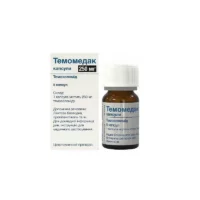Description
Puri-Netol (6-mercaptopurine) Tablets 50 mg. №25
Ingredients
- Active ingredient: 6-mercaptopurine 50 mg per tablet.
Dosage
- Dosage: The usual dose of Puri-Netol is determined by your doctor based on your medical condition and response to treatment. It is important to follow your doctor’s instructions carefully.
Indications
- Indications: Puri-Netol is indicated for the treatment of acute lymphoblastic leukemia and other conditions where immunosuppression is required.
Contraindications
- Contraindications: Do not take Puri-Netol if you are allergic to 6-mercaptopurine or any other ingredients in the tablets. It is important to inform your doctor about all your medical conditions and medications before starting Puri-Netol.
Directions
- Directions: Take Puri-Netol exactly as prescribed by your doctor. Swallow the tablet whole with a full glass of water. Do not crush or chew the tablet.
Scientific Evidence
- 6-mercaptopurine, the active ingredient in Puri-Netol, is a purine analog that interferes with the synthesis of DNA and RNA. This mechanism of action makes it effective in the treatment of leukemia and other conditions where cell proliferation needs to be controlled. Several studies have demonstrated the efficacy of 6-mercaptopurine in inducing and maintaining remission in patients with acute lymphoblastic leukemia.
Additional Information
- It is important to have regular blood tests while taking Puri-Netol to monitor your blood cell counts and liver function. Inform your doctor immediately if you experience any unusual bruising or bleeding, signs of infection, or liver problems while taking Puri-Netol.
Pharmacological Effects
- 6-mercaptopurine exerts its pharmacological effects by inhibiting key enzymes involved in purine metabolism, leading to the disruption of nucleic acid synthesis in rapidly dividing cells. This action results in the suppression of abnormal cell growth, making it a valuable agent in the treatment of various hematologic malignancies.
Clinical Trials and Comparative Effectiveness
- Clinical trials have shown that Puri-Netol, containing 6-mercaptopurine, is effective in inducing and maintaining remission in patients with acute lymphoblastic leukemia. Comparative studies have also demonstrated the efficacy of 6-mercaptopurine in combination therapies for various autoimmune diseases. Its effectiveness, along with its relatively favorable side effect profile, makes it a preferred choice in certain patient populations.





